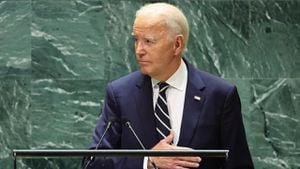In recent years, the emergence of generative artificial intelligence (AI) technologies has stirred the imagination and prompted numerous questions about creativity. One pertinent question stands out: can generative AI enhance human creativity, or does it merely streamline our existing capabilities? A recent study by Anil R. Doshi and Oliver P. Hauser, published in Science Advances, takes a deep dive into this issue, examining how generative AI impacts the production of short stories.
The team employed a fascinating method: an online experiment involving writers who were tasked with crafting micro stories. In some cases, these writers were provided with ideas generated by a large language model (LLM) - specifically, OpenAI's GPT-4. The results were compelling and multifaceted, suggesting that while AI can indeed boost individual creativity, it may also homogenize the collective diversity of new content.
To set the stage, it's essential to understand the broader context. Creativity is a core human trait, central to literature, art, and music. However, the advent of generative AI, capable of producing text, images, audio, and video, challenges previous notions of human superiority in content creation. Earlier studies have shown that these technologies can facilitate joint AI-human storyline development, enhance productivity in various white-collar jobs, and improve programming tasks. Nonetheless, their potential impact on human creativity, especially in expressive domains like literature, remains less explored.
In their study, Doshi and Hauser focused on the production of short fiction, a widespread form of human expression. They randomly assigned participants to one of three conditions: Human-only, Human with one generative AI idea, and Human with five generative AI ideas. The core objective was to explore how access to these AI-generated ideas influenced the creativity, writing quality, and enjoyment of the produced stories.
The experimental design was meticulous. Participants first completed a divergent association task, a measure of inherent creativity, and were then tasked with writing a story based on a randomly assigned topic. Those in the generative AI conditions could call upon GPT-4 to provide one or five starting ideas for inspiration. Following this, a separate group of evaluators, unaware of which stories involved AI input, rated the stories on creativity, usefulness, and various emotional characteristics.
What emerged from this design was a nuanced picture of AI's role in creative writing. Writers with access to generative AI produced stories that were generally more creative and better written. For instance, having access to one AI idea increased the novelty of stories by approximately 5.4%, while access to five AI ideas led to an 8.1% increase. The usefulness of the stories showed similar improvements. Such increments are substantial in the realm of creative writing, where even minor enhancements can signify significant quality improvements.
The study's findings were particularly enlightening for less inherently creative writers. These individuals benefited the most from AI assistance, with creativity boosts measuring up to 10% and enjoyment and quality enhancements reaching over 20%. This suggests that generative AI can serve as an equalizer, helping those with lower initial creativity levels to produce work comparable to their more creative peers. It echoes findings in other domains where AI has leveled performance disparities among workers of varying productivity levels.
However, the study also uncovered a potential pitfall: stories generated with AI assistance tended to be more similar to each other than those crafted without AI. This reduction in diversity points to a classic social dilemma. Individually, writers benefit from the creativity boost provided by AI, yet collectively, the uniqueness of content diminishes. The cosine similarity scores used in the study indicated that AI-augmented stories were significantly more alike, suggesting a homogenizing effect of relying on AI for creative inspiration.
Reflecting on these findings, it's essential to discuss the broader implications for various stakeholders. For instance, in the publishing industry, an increased reliance on AI could streamline production but may also lead to a saturated market with less diversity in storytelling. For policymakers, these insights could guide the development of regulations that balance the benefits of AI-enhanced creativity with the need to preserve content diversity. Moreover, for the general public, understanding these dynamics can inform personal decisions about engaging with AI tools.
The researchers also delved into the underlying mechanisms of their findings. They found that AI-generated ideas served as professional-grade starting points, enhancing story quality and creativity more effectively than writers working unaided. Yet, the AI's influence didn't elevate the upper bounds of creativity; highly creative writers did not see substantial gains from AI input, indicating that human ingenuity still possesses unique strengths that AI cannot easily replicate.
Yet, like any study, this research has its limitations. The task's constraints—story length, medium, and type of output—restrict its generalizability. Future research might expand into different creative domains such as longer literary works, visual arts, or music, where AI's influence could manifest differently. Additionally, varied prompting and interactive engagements with AI might yield richer insights into its creative potential.
Looking forward, this study sets a path for exciting possibilities. Future research could explore more extensive and diverse applications of AI in creative fields. For example, how might AI assist in developing complex narratives or visual arts? Could financial or ranking incentives further enhance AI's impact on creativity? These questions open new avenues for exploring the synergy between human and machine creativity.
In conclusion, Doshi and Hauser's study provides a foundational understanding of the nuanced relationship between generative AI and human creativity. While AI can enhance individual creative output, it also presents challenges in maintaining diversity at a collective level. As AI technologies continue to evolve, the balance between leveraging their benefits and preserving the richness of human creativity will be crucial. As the researchers aptly note, "the creative possibilities for tomorrow may extend beyond our current, collective imagination".



